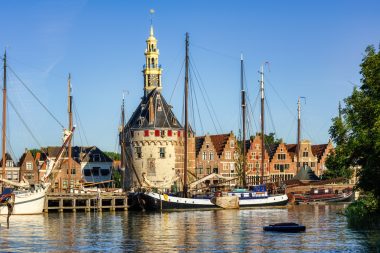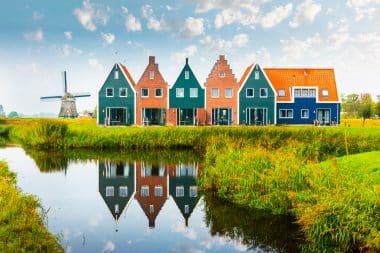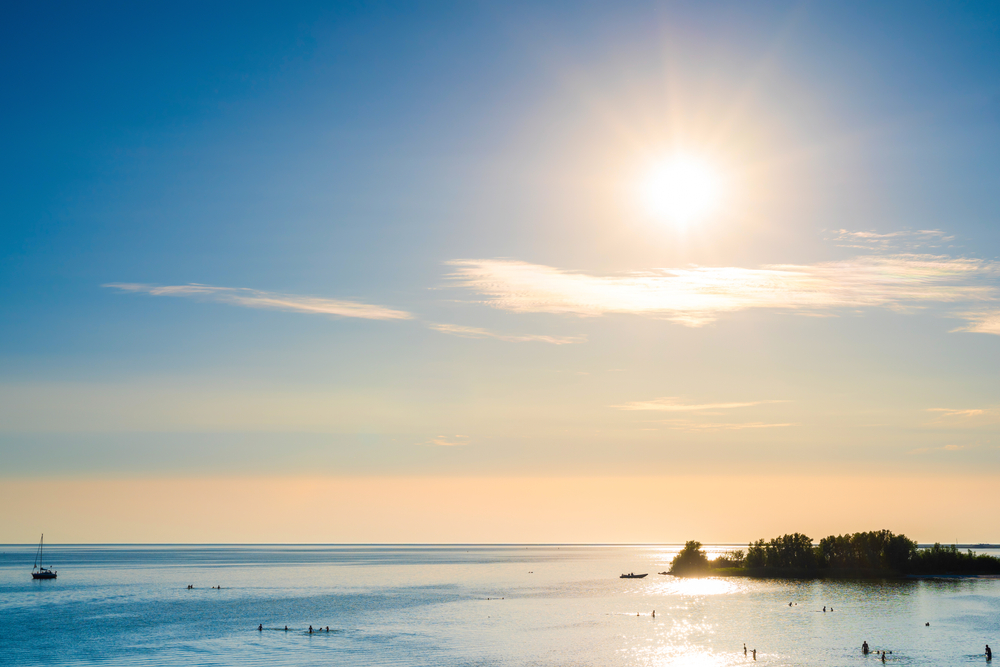The IJsselmeer or IJsselmeer in Dutch is not what the name suggests. In Dutch, the sea refers to an inland lake. This largest lake in the Netherlands was created in 1932 by the construction of the Afsluitdijk (Afsluitdijk) at the junction between the former Zuiderzee bay and the Wadden Sea (Waddenzee).
After the tides in the IJsselmeer had disappeared, land could then be extracted from the water by draining. The city of Lelystad, which was only founded in 1967, is not only a particularly beautiful example of the settlement of the polders that have been created in this way, but also one of 8 unique holiday resorts on the IJsselmeer, which promises its guests a varied and unforgettable holiday with its picturesque fishing villages, cycle paths over dams and through wide nature as well as good conditions for sailing and surfing.
1. Lelystad
The capital of the Dutch province of Flevoland is a good starting point for those who like it varied. Whether it’s shopping at Batavia Stad Fashion Outlet, a vivid story about the draining of Flavoland and Dutch shipping, fun and thrills at Walibi Amusement Park , or watching wild horses and white-tailed eagles in Nieuw Land National Park and the Oostvaardersplassen Nature Development Area, there is something for everyone in and around Lelystad.
2. Enkhuizen
An impressive drive over the dam with water on both sides takes you from Lelystad to Enkhuizen. The small harbour town with typical Dutch flair invites you to take a relaxing walk along the canals and have a coffee in the picturesque city centre.
3. Hoorn

The IJsselmeer does not lead to Cape Horn, but it does lead to where the name comes from. In the 17th century, the Dutch port city of Hoorn was an important seat of the East India Company and the starting point for many of the undertakings that shaped the Dutch Golden Age. Visitors can explore this in the Westfries Museum on Roode Steen, the central town square, while the 20th century comes back to life on a small island at the harbour. The Museum van de 20e eeuw is housed in the city’s former prison.
4. Schokland
There is even more history in Schokland. Actually, one should say “on Schokland”, because this was an island before it was drained. Its shape can still be seen today, although Schokland is surrounded by land far and wide. With the designation of Schokland as a World Heritage Site, UNESCO has erected a monument to the technical masterpiece on the IJsselmeer as well as to the achievements of past cultures that lived their lives here with and in the fight against water 10,000 years ago.
5. Volendam

The quaint colorful wooden houses of the typical Dutch fishing village have made it a popular tourist magnet. Anyone who lets themselves be carried away by the cheerful hustle and bustle today has no idea of the dark history hidden behind the cheerful facades of the houses. The interactive museum Experience Volendam immerses its visitors in the isolated, Catholic world of Volendam during the heyday of Calvinism and makes the dark sides of poverty and religious zeal tangible.
6. Makkum
With all the history and culture around the IJsselmeer, you should not forget that the inland lake also offers classic bathing holidays and water sports opportunities. However, not every place actually has a beach. Makkum does. In addition, sailors, windsurfers and kitesurfers often find ideal conditions here. If you’ve had enough of the water, you can see it on a trip over the Afsluitdijk and get to the Casemate Museum with dry feet. In the former bunker complex from the Second World War, it is told how Dutch soldiers confronted the German forces in May 1940.
7. Urk
Urk also has a beach to offer, and a particularly large, child-friendly one at that. But not only that. The nearby harbour and lighthouse provide a picturesque backdrop to end the day in one of the many restaurants and cafés in the atmospheric fishing village and to realise that Urk was once an island.
8. Lemmer
Lemmer on the border with Friesland brings together all the attractions of the IJsselmeer in one place. Water lovers can enjoy the beach or sailing and surfing. If you are looking for Dutch flair, walk along the many canals that run through the town. And lovers of history and engineering will find the Wouda Pumping Station (Woudagemaal) an impressive testimony to the triumph of progress that gave rise to the IJsselmeer. The steam-powered water pumping station is the largest still functioning of its kind in the world and proves this in spectacular fashion a few times a year when it envelops the area in white steam and demonstrates how new land was wrested from the water in the twenties of the last century. Guests can take to the skies themselves on a hot air balloon ride and admire the beauty of the IJsselmeer from a bird’s eye view.
A holiday on the IJsselmeer may not be a holiday by the sea. Instead, guests bathe in a former sea beech, which has been transformed into a freshwater lake by human hands, and walk through typical Dutch fishing villages built on the former seabed. From shopping to cycling and hiking to numerous museum visits and attractions for the little ones, there are plenty of activities to suit all tastes in these eight special resorts and the neighbouring villages. Whether alone or with the whole family, Holland can be experienced in a very special way on the IJsselmeer.


